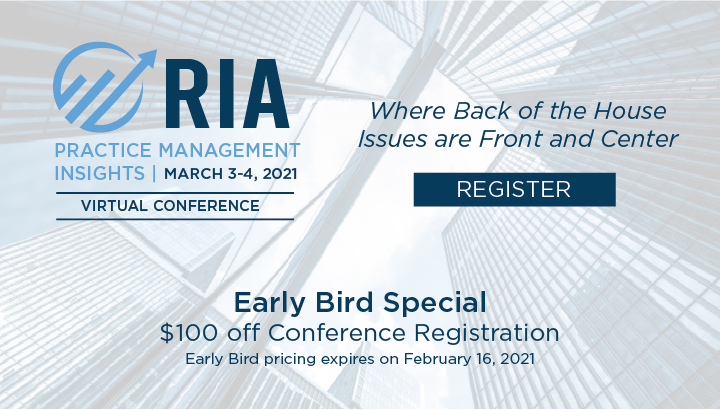Seven Considerations for Your RIA’s Buy-Sell Agreement
Working on your RIA’s buy-sell agreement may seem like a distraction, but the distraction is minor compared to the disputes that can occur if your agreement isn’t structured appropriately. Crafting an agreement that functions well is a relatively easy step to promote the long-term continuity of ownership of your firm, which ultimately provides the best economic opportunity for you and your partners, your employees, and your clients.
If you haven’t looked at your RIA’s buy-sell agreement in a while, we recommend dusting it off and reading it in conjunction with the discussion below.
1) Decide what’s fair.
In our experience, buy-sell agreements tend to function well when they attempt to strike a balance between the interests of the various stakeholders in an investment management firm, including the founding partners, next-gen management, employees, clients, and the firm itself. By balancing the interests of the various stakeholders, a well-structured buy-sell agreement can be a competitive advantage by facilitating a smooth transition between founding partners and next-gen management. Ultimately, this enhances value for everyone.
2) Define the standard of value.
Standard of value is an abstraction of the circumstances giving rise to a particular transaction. It imagines the type of buyer, the type of seller, their relative knowledge of the subject asset, and their motivations or compulsions. We wouldn’t recommend getting creative here. Unconventional standards of value can and do lead to different interpretations that can result in wildly different conclusions of value. For most purposes, using one of the more common definitions of Fair Market Value is advisable. Fair Market Value contemplates a hypothetical willing seller and willing buyer, both of whom have reasonable knowledge of the subject asset and neither of whom are under any compulsion to buy or sell. This standard has an almost universally agreed-upon definition and is well established and understood in the valuation and legal communities, all of which helps to remove uncertainty as to its valuation implications.
3) Define the level of value.
Valuation theory suggests that there are various “levels” of value applicable to a business or business ownership interest. For example, a non-marketable minority interest may be worth less than an otherwise identical controlling interest. From a practical perspective, the “level of value” determines whether any discounts or premiums are applied to a baseline marketable minority level of value. Naturally, sellers would prefer a premium and buyers a discount, but it helps to keep in mind that today’s buyers are tomorrow’s sellers, and today’s sellers are yesterday’s buyers. When transactions are done on a consistent basis over time, it helps to promote a sustainable marketplace for the company’s shares.
4) Avoid formula pricing.
We often see buy-sell agreements that use a formula to determine value (usually a fixed multiple of a historical performance metric). These formulas often reflect what the principals of the firm thought the business was worth at the time the buy-sell agreement was drafted. As market conditions and the business’ economics change, formula prices can quickly diverge from market value, but the ink on the page remains.
When it comes time to buy or sell, perhaps years or decades after the buy-sell agreement was drafted, the formula price will inevitably be benchmarked against the actual buyer and seller’s perceptions on the current market value of the interest. If the formula value is greater than the perceived value, then the selling shareholder may find there are no willing buyers or no reasonable way to finance the sale. If the formula value is less than the perceived value, then the selling shareholder may be incentivized to hold on to their ownership longer than is optimal from the perspectives of the firm, next-gen management, and clients.
5) Specify the valuation date.
A buy-sell agreement should be explicit about the “as of” date of the valuation. Typically, valuations will consider only what is known or reasonably knowable as of this date. As a result, a difference of just a few days can have a significant impact on the valuation if an unexpected event occurs at the firm. Consider, for example, the death of a key executive. Such an event will often trigger buy-sell agreement provisions, and whether or not the event factors into the valuation will depend in part on the valuation date specified by the agreement. For firms with larger shareholder bases and relatively frequent transactions, it often makes sense to specify an annual valuation date that then applies to transactions throughout the year.
6) Decide who will perform the valuation.
We recommend selecting a reputable third-party valuation firm with experience valuing investment management firms.
7) Manage expectations.
Most of the shareholder agreement disputes we are involved in start with dramatically different expectations regarding how the valuation will be handled. Testing your buy-sell agreement now by having a valuation prepared can help to center or reconcile those expectations and might even lead to some productive revisions to your buy-sell agreement.
For more information on RIA practice management issues, register for our upcoming conference, RIA Practice Management Insights. More information can be found below.
Early Bird Pricing for the Upcoming RIA Practice Management Insights Conference Ends in 7 Days
Mercer Capital has organized a virtual conference for RIAs that is focused entirely on operational issues – from staffing to branding to technology to culture – issues that are as easy to ignore as they are vital to success. The RIA Practice Management Insights conference will be a two half-day, virtual conference held on March 3 and 4.
Join us and speakers like Jim Grant, Peter Nesvold, Matt Sonnen, and Meg Carpenter, among others, at the RIA Practice Management Insights, a conference unlike any other in the industry.
Take advantage of early bird pricing to receive $100 off conference registration. Offer ends next week.
Have you registered yet?
 RIA Valuation Insights
RIA Valuation Insights 







